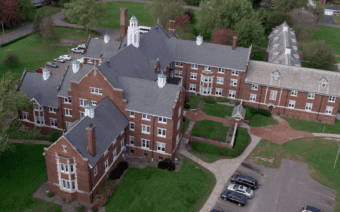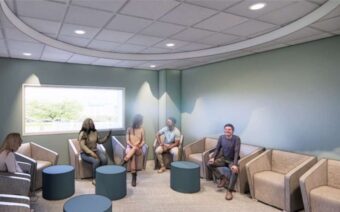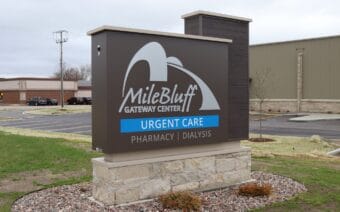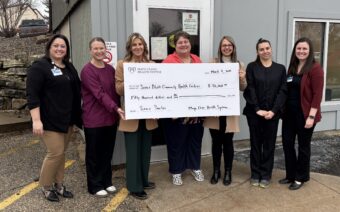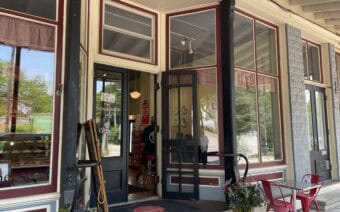
June 24, 2024
EAU CLAIRE – The University of Wisconsin-Eau Claire (UWEC) recently announced an alliance between medical care providers, entrepreneurs and other community leaders to work toward better health care in rural communities.
The Rural Health Innovation Alliance (RHIA), which includes Mayo Clinic and Health Equity Innovation Partners (HEIP), aims to increase healthcare access, while also reducing costs for medical providers and patients.
The announcement comes shortly after the closures of HSHS St. Joseph’s Hospital in Chippewa Falls – the only hospital in the city – and HSHS Sacred Heart Hospital in Eau Claire.
Michael Carney, interim UWEC provost and chemistry professor, said planning for the alliance predates the hospital closures but has added urgency to the issue of figuring out rural healthcare solutions.
“What we were seeing and hearing is that there were some providers who were on shaky grounds financially,” he said. “We had no idea HSHS was going to be departing the region. That was a complete shock.”
Carney said UWEC and Mayo Clinic first entered into a research agreement in 2017.
Since then, the two have become partners in research and education.
Mayo Clinic, Carney said, provides sports medicine for Blugold Athletics, a health director for UWEC Student Health Services and placements for healthcare students.

Through a Workforce Innovation Grant from the Wisconsin Economic Development Council, Carney said the two have worked toward figuring out the needs of rural communities and increasing the number of healthcare students at UWEC.
So far, he said the nursing program has already increased its capacity by 60%.
“(The grant) opened our eyes to think about other challenges before us, like rural healthcare delivery,” he said. “We realized it’s a bigger problem than UW-Eau Claire and Mayo Clinic can solve on our own.”
In comes HEIP – a Chicago-based organization that Carney said promotes collaborations between health systems and healthcare innovators.
He said a Mayo Clinic colleague had a chance meeting with one of the organization’s founders, and the two got to talking.
“They realized they had some overlap in what they were and what they do,” he said. “Even though they’re based in Chicago, they have an interest in figuring out how to do healthcare delivery in rural areas equitably and innovatively.”
Carney said though some have questioned whether the partners at HEIP are in it for the long term, he’s confident in the longevity of their partnership.
“They’ve been to Eau Claire many times,” he said. “They were here (recently) for the groundbreaking of our new science building. They are committed to helping us solve this problem – not just consulting with us and then… walking away.”
Just the beginning
Carney said the alliance is in its planning stages, making connections with healthcare and entrepreneur partners and determining its next steps.
“We’re still gathering information to figure out what the big issues are and what the possible solutions are to those big issues,” he said. “We’re trying to bring in people who already have some expertise in this area and have ideas or have tried things.”
In addition to the two main collaborators, Carney said the alliance has been in conversation with Marshfield Clinic and has plans to speak with members of Prevea Health and Emplify Health – the merger of Bellin Health and Gundersen Health System.
Once the alliance has fleshed out its healthcare partners and determined the key issues in rural healthcare delivery, Carney said it will begin bringing healthcare entrepreneurs into the equation.
“We need entrepreneurs to come and test their ideas within the alliance to see whether it has any legs or whether it has any chance of being deployable,” he said.

Carney said such ideas could include new technology or healthcare delivery models.
One idea the alliance aims to put into practice is the use of what Carney calls microsites – temporary clinics that could be set up with a clinician on-site, but patients would be connected virtually to a provider or specialist.
“It doesn’t require the patient to travel from wherever they might be,” he said. “Instead, they could go to this site, and it could be located at an employer, a Walmart or maybe in the parking lot of a Dollar Tree store.”
Carney said the RHIA aims to create a sandbox where people can come into the community and test innovations before implementing them in rural communities.
“What we’ve demonstrated in Eau Claire, specifically, is that the community comes together to solve big problems,” he said. “The Eau Claire community has been down this path before, where a large employer left town… on short notice.”
Carney is referencing the 1992 closure of the UniRoyal Tire Plant, a factory that employed around 600 people.
“That memory is still in the minds of people,” he said. “We came together. We solved the problem. We completely reimagined and revitalized Eau Claire as a city.”
The alliance, Carney said, will allow each of its partners to grow and improve.
He said it aspires to make the region the epicenter for innovation, which, if successful, could become a national model.
“The community is engaged, and the healthcare providers… and university are incentivized,” he said. “We want our students to be on the front lines of seeing what new technology is possible. Technology that can solve this rural healthcare predicament we’re in.”
 UWEC announces Rural Health Innovation Alliance
UWEC announces Rural Health Innovation Alliance


